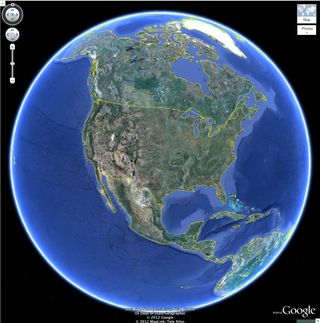Guide to Google Maps API - and 6 great alternatives
Wm Leler expands your mapping horizons by explaining Google Maps API's benefits - and some alternatives that could be even better.
We explain all you need to know about Google Maps API and also offer some great alternatives and why you should consider them. This Google API is one of the most popular JavaScript libraries on the web, used by more than 350,000 websites. And with good reason – it's powerful and for six years was absolutely free. It spawned a wave of map mashup websites (who initially hacked the then-private API, which Google not only tolerated but encouraged).
But Google dropped a bombshell in October 2011 when its announced it would start charging the heaviest users of Google Maps and would eventually start inserting ads for other users (as it does for videos on YouTube). Google's price was quite high – $4 per thousand map views – which had popular map-based websites such as FourSquare scrambling to find cheaper alternatives rather than paying Google tens or even hundreds of thousands of dollars each month.
- Explore the best JavaScript APIs and HTML APIs
By June, Google realised it had priced its maps too high and was in danger of losing most of its potential paying customers, so it dropped the price by 88 per cent to 50 cents per thousand views. But the damage had been done. Other vendors and open-source solutions had already attracted attention as reasonable alternatives.
In fact, many of these alternatives have advantages over Google Maps beyond being cheaper (or free). Even if you are a small enough user of Google Maps that you wouldn't have to pay (you average less than 25,000 map views a day), it is worth your while to look at the alternatives.
What kind of map user are you?
This article assumes that you are a user of Google's JavaScript map API. But even if you know nothing about JavaScript and just want to embed a simple map on your website, there are alternatives. Mapbox Embed is an alternative to embeding a Google Map on a webpage, in case you don't like the idea of Google placing ads on your map.
Proprietary versus open APIs
In addition to Google Maps, there are a number of other proprietary APIs. Most proprietary APIs provide free or low-cost accounts to smaller users, as long as your maps are accessible to the public and not behind a password or other paywall.
Proprietary APIs are usually all-in-one solutions that include not just the API, but also basemaps and servers to serve map tiles to the API. This is both good (simpler to use) and bad (lack of flexibility). The main advantage of proprietary APIs is that they tend to include advanced features like real-time traffic, routing (directions), geocoding (translating addresses into locations), 3D buildings and 'bird's eye' views, street-level imagery, and information about businesses on the map.
Get the Creative Bloq Newsletter
Daily design news, reviews, how-tos and more, as picked by the editors.
On the other hand, some of the most popular alternatives to Google Maps API are open source. Mapping applications are incredibly diverse, and having access to the source makes it much easier to customise things to your needs.
Another advantage of open source is that you can mix and match components for your mapping solution. With Google Maps, Google controls all parts of the solution: the API, the maps, and the servers that serve these maps. Open-source map APIs allow you to pick from a large number of maps, or even create your own maps. You are also free to use your own servers, put your maps in the cloud, or outsource your map server needs.
Google Maps

Google Maps, of course, is still the 800-pound gorilla of mapping APIs. Google provides advanced features: powerful routing (including for walking, bicycling, and transit), Street View, 3D buildings, weather, and traffic information. Some of these features are unique to Google, so (depending on your application) you might have no choice but to use its API.
A big problem with Google is that you have little or no control. Google Maps comes with three base maps: street, satellite, and terrain. It is possible to use the Google Maps API with other maps but this is usually not a good idea because Google charges are based on API usage, even if you are not using its maps. If you aren't using Google's maps (or one of its other unique features), there is no reason to pay for them.
Next page: Six great alternatives to Google Maps API

Thank you for reading 5 articles this month* Join now for unlimited access
Enjoy your first month for just £1 / $1 / €1
*Read 5 free articles per month without a subscription

Join now for unlimited access
Try first month for just £1 / $1 / €1
The Creative Bloq team is made up of a group of design fans, and has changed and evolved since Creative Bloq began back in 2012. The current website team consists of eight full-time members of staff: Editor Georgia Coggan, Deputy Editor Rosie Hilder, Ecommerce Editor Beren Neale, Senior News Editor Daniel Piper, Editor, Digital Art and 3D Ian Dean, Tech Reviews Editor Erlingur Einarsson and Ecommerce Writer Beth Nicholls and Staff Writer Natalie Fear, as well as a roster of freelancers from around the world. The 3D World and ImagineFX magazine teams also pitch in, ensuring that content from 3D World and ImagineFX is represented on Creative Bloq.
